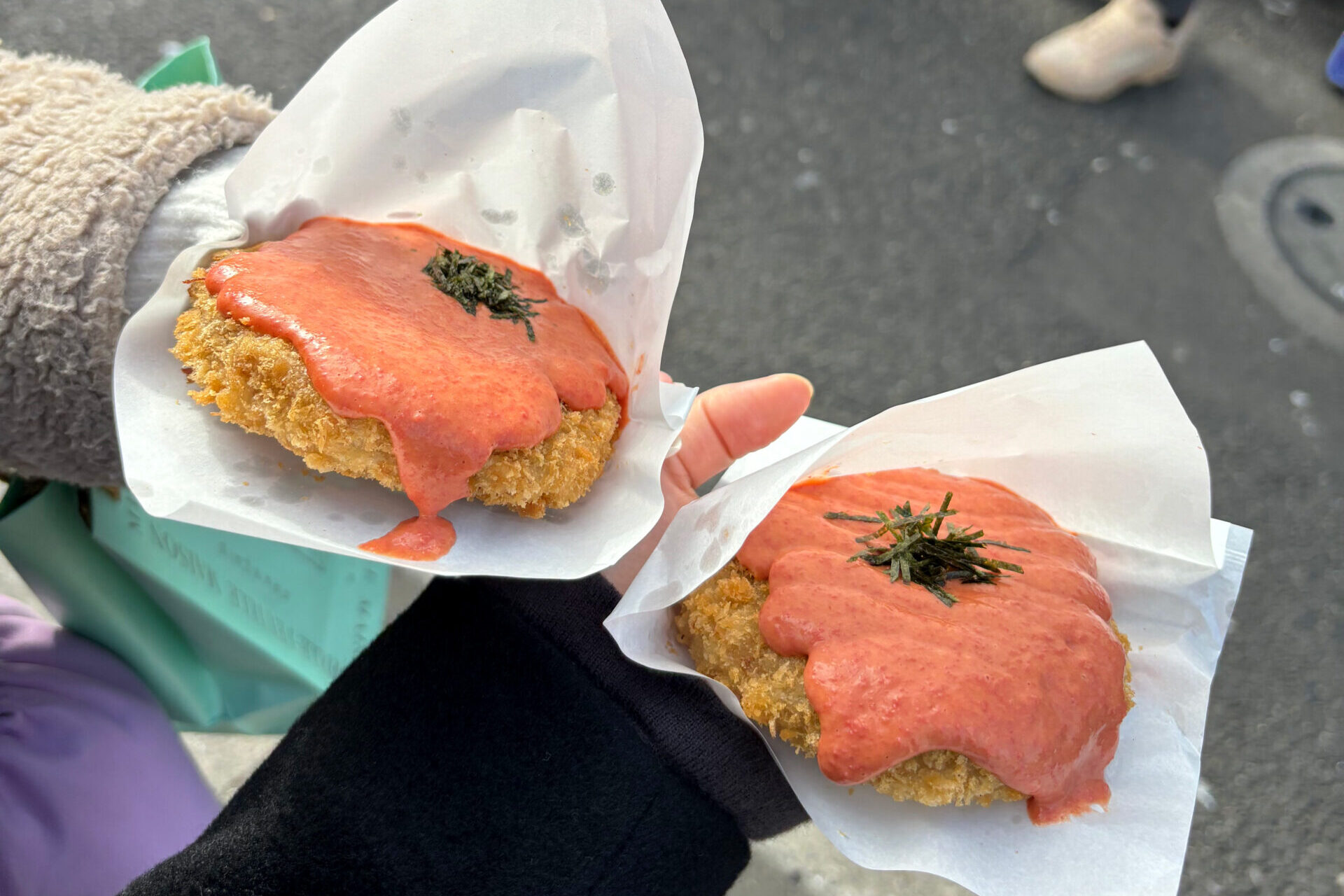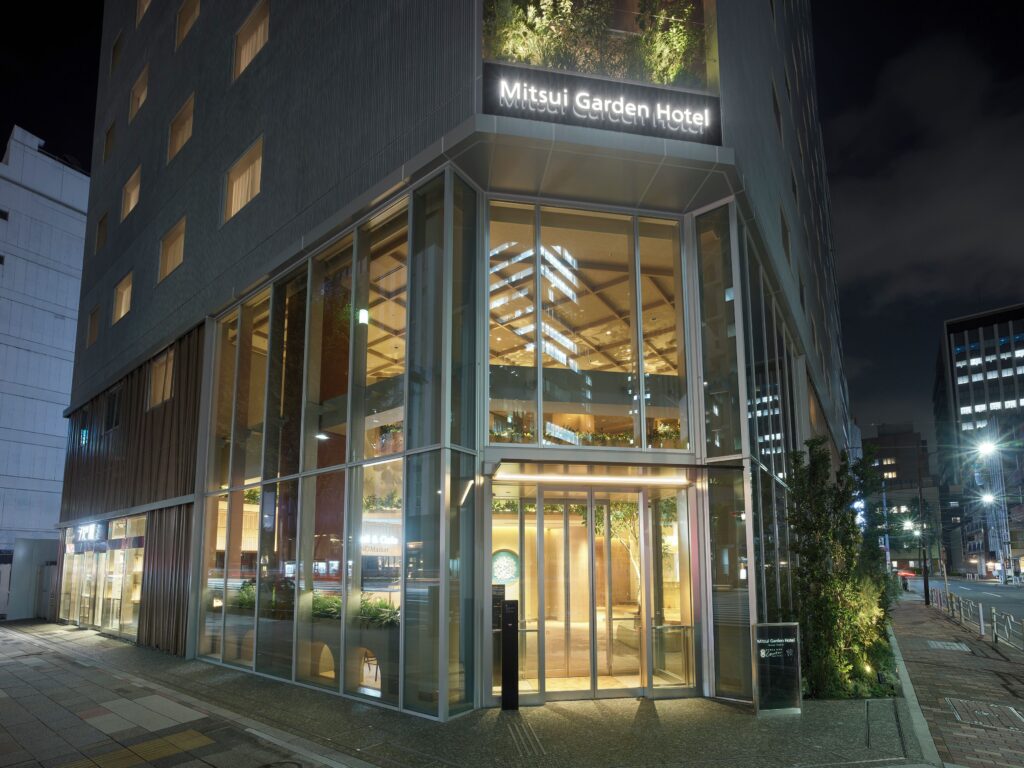
When you come Tsukiji Outer Market, you can chow down on some tasty stuff. Tsukiji Market, where seafood and fresh produce from all over Japan used to gather, moved to Toyosu in 2018, but the hustle and bustle of food stalls popping up outside the market is still going strong.
The folks here are awesome. When they see me, they toss me some super thick slices of meat or fish, chuckling a bit. It’s a spot that represents the abundance of food, generously serving up for both humans and non-humans alike. Coming here, anyone can feel a little bit happier.
Thanks, Earth!
A. If you’re in Ginza, you’ve gotta check out the Tsukiji Outer Market—it’s a must-visit
The nearest station to Tsukiji Outer Market is Higashi-Ginza Station (marked as A on the map). On the Oedo (Metro) Line, it’s Tsukiji Market Station (marked as ❶ on the map). If you’re around the Kabuki-za in Ginza, it’s just a quick 7-minute walk to Tsukiji Outer Market—it’s right next door to Ginza!
The origin of Tsukiji Market dates back to 1923 when a fish market relocated as part of the reconstruction efforts after the Great Kanto Earthquake. Over time, it evolved into a bustling hub where fruits, vegetables, and seafood from all corners of Japan gathered, earning Tsukiji a global reputation for high quality food.
However, to accommodate Tokyo’s growth and improve market functions, after years of debate, it was relocated to Toyosu in 2018. However, unrelated to the relocation of Tsukiji Market, the Tsukiji Outer Market continues to evolve independently.
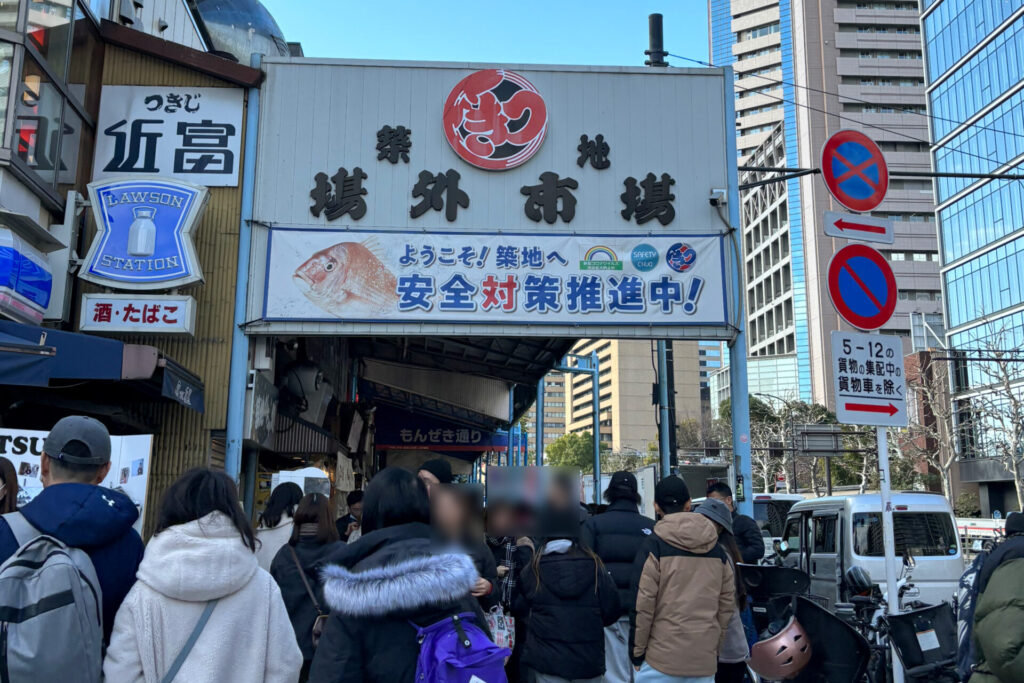
B. Bustling Tsukiji Outer Market
Tsukiji Outer Market (marked as B on the map) has truly transformed into a bustling little town for the workers of Tsukiji Market. It serves as the ultimate go-to destination for a quick and convenient meal for those laboring away at the market from the crack of dawn. Given that the clientele consists of food professionals, the eateries that thrive here are those endorsed by fellow professionals in the industry.
And guess what? This has inevitably piqued the interest of us regular folks too!
Countless food stalls; impossible to pick the best one!
Since Tsukiji Market, with its origins in the fish market, naturally boasts a wide selection of seafood, but given its history of sourcing ingredients from all over Japan, the variety and quality of ingredients are top-notch.
Lately, there’s been an increase in shops offering a variety of smaller-sized dishes, so you can enjoy a wide range of cuisines.
Shops and dishes mentioned below were selected to introduce you to Tsukiji Outer Market. There are many more shops to explore, so you are encouraged to wander around and enjoy according to your own senses.
If you ever visit the Tsukiji Outer Market, you know that it’s jam-packed with narrow aisles bustling with people. While it’s tempting to wander around, nibbling on treats from different stalls, it can get a bit risky with the crowds.
The rule here is to enjoy your food where you bought it, right in front of the designated shop. And hey, let’s all do our part and avoid littering—no tossing trash on the ground!
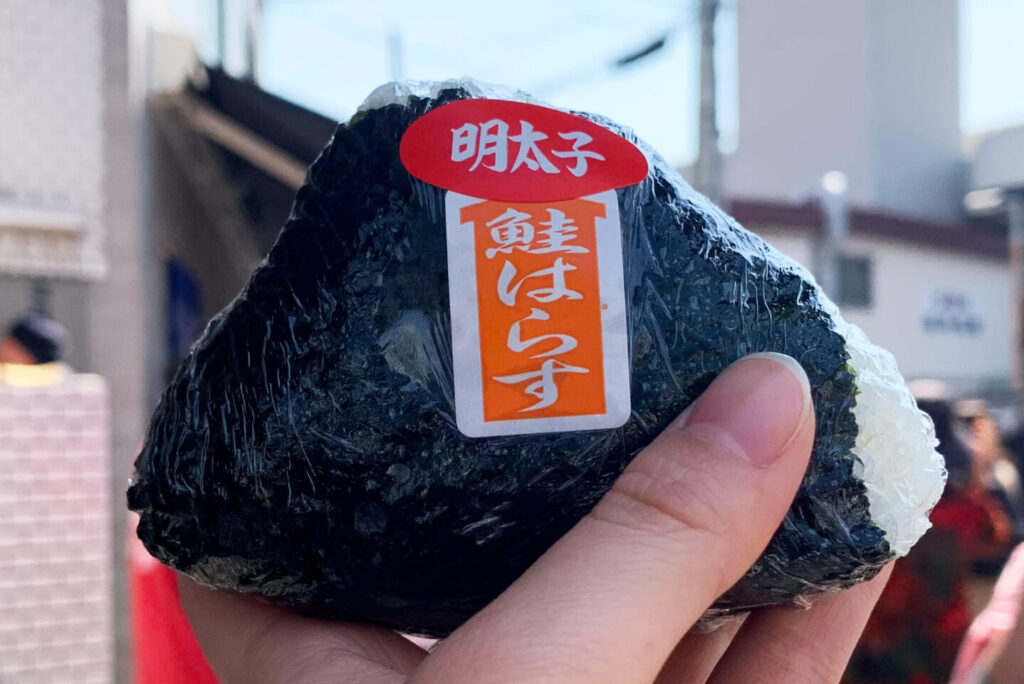
Detour Point ❷ Hand-Formed Rice Ball at Marutoyo, Tsukiji Outer Market
You are recommended to savor the best of the basics: Onigiri, the quintessential Japanese comfort food. This place has a history as a fish market, so its specialty is luxurious seafood-filled rice balls. But I really want you to try the most classic combo—Salted Salmon Onigiri! It might not get much attention, but it’s the perfect way to enjoy the deliciousness of Japanese rice.
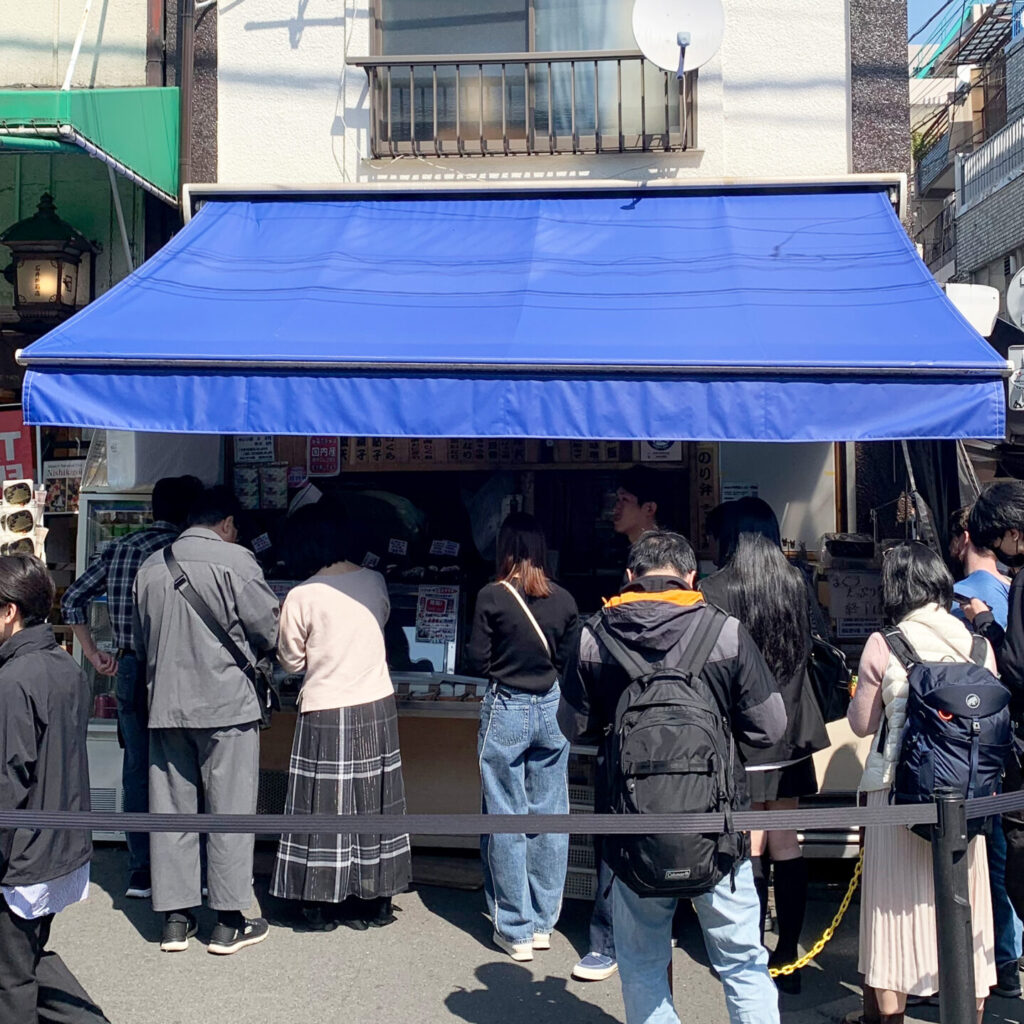
This famous onigiri shop always has a line out the door! Classics like salted salmon onigiri are pre-made and ready to grab, but the fancier seafood ones are made to order. Checking out the signboard out front and picking out a filling that catches your eye is part of the fun!
Detour Point ❸ Wagyu Beef Skewers at Wagyu Jyu Jyu, Tsukiji Outer Market
Next up is the main dish straight away, although of course, you could save it for last at this stall.
Anyone who tries these skewers will be amazed by the tenderness and juiciness of the Wagyu beef. On top of that, they’ve got ultra-luxurious skewers topped with Salmon Roe or Sea Urchin, adding an extra touch of extravagance.
It’s the kind of dish that might make you feel a little guilty for indulging so much. And with prices around $100 per skewer, it’s definitely a splurge-worthy combination.
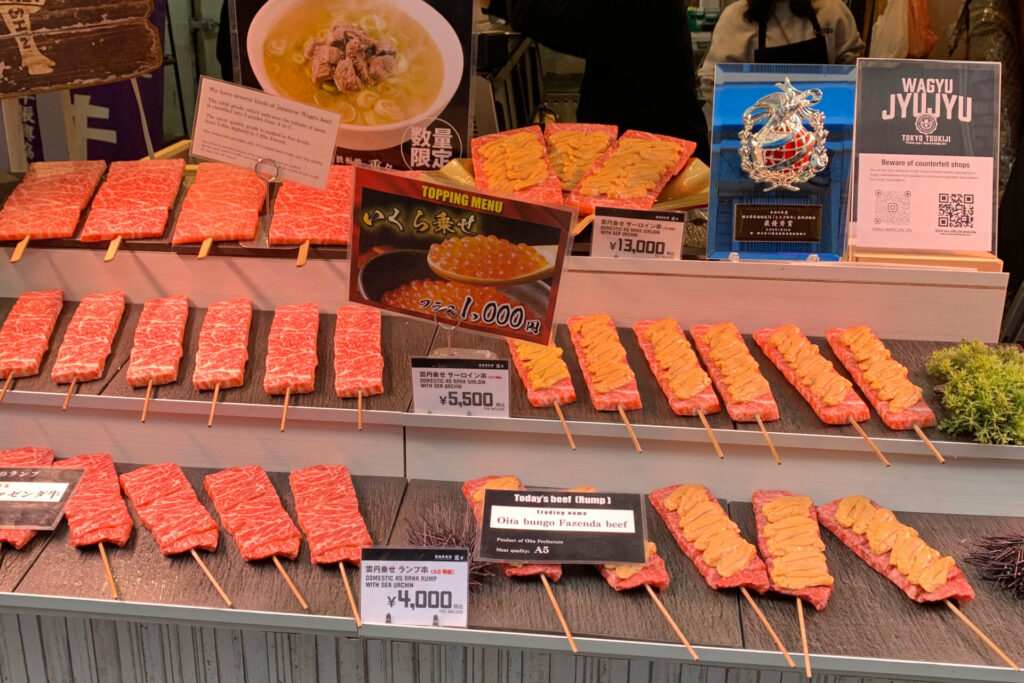
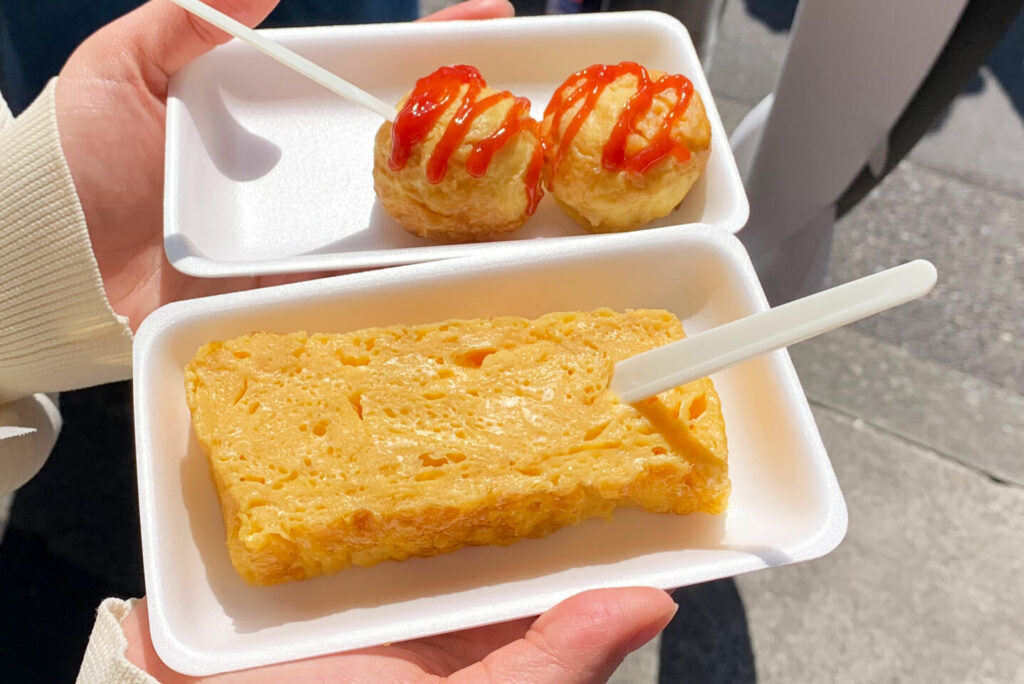
Detour Point ❹ Thick Omelette at Marutake, Tsukiji Outer Market
Next up is the thick omelette. It might be a bit of a stretch to say that Japanese omelettes alone can steal the spotlight as a main dish, but they’re certainly something special. Made with plenty of dashi (fish broth), these omelettes are soft and delicately sweet.
I’d love for you to try the twist-on-omelette-rice version too!

While you can get them with eel, shrimp or vegetables, the plain egg version is the way to go. They’re delicious even when chilled, so if you enjoy it at the counter, be sure to grab a big chunk for a midnight snack!
Since there are other shops in Tsukiji Outer Market that also serve thick omelette, it might be a good idea to try them out for comparison, don’t you think?
Detour Point ❺ Bluefin Tuna Fatty Belly Roll at Maguro-no Miyako, Tsukiji Outer
When people think of Tsukiji Outer Market, many imagine Sushi like the one in the photo: a luxurious dish with generous chunks of bluefin tuna belly on top of vinegared rice.
Not only this shop, but various others also sell such Sushi, and you’ll even spot small seafood bowls around. These dishes are all about the quality of the ingredients, making Tsukiji Outer Market a real haven for foodies, wouldn’t you say?
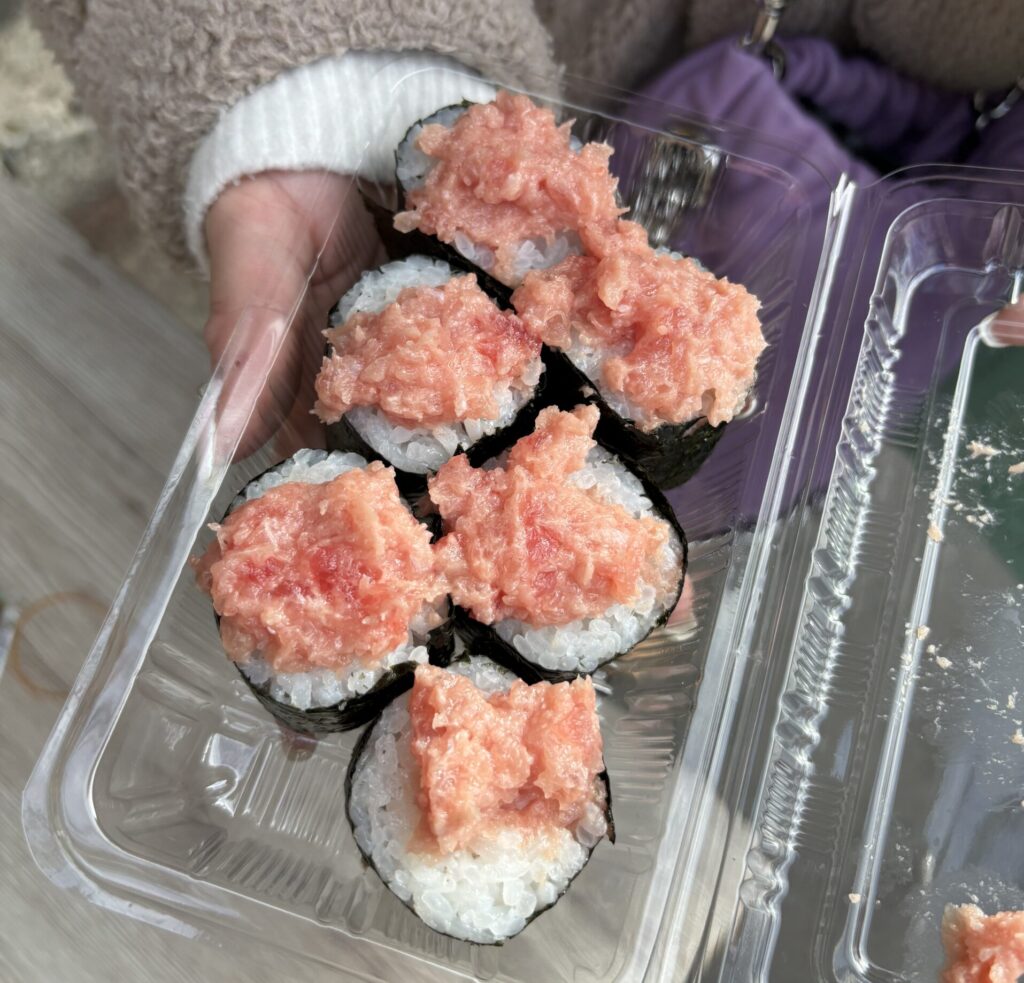
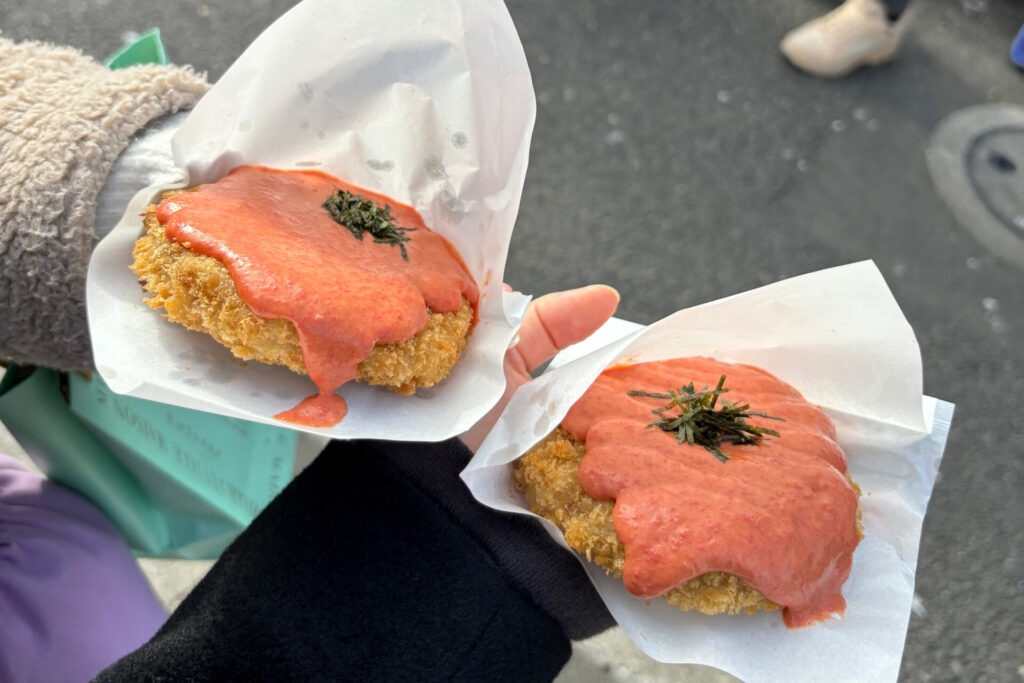
Detour Point ❻ Mentaiko Monja Croquette at Tsukiji Korokke, Tsukiji Outer
Next up is a bit of a curveball—the highly praised dish here. While croquettes are delicious on their own, this dish takes it up a notch by adding Mentaiko Monja on top. For Japanese folks, just hearing those words might pique their interest a bit.
While they offer other types of croquettes, the specialty of this shop is the Mentaiko Monja Croquette. But even eating a plain, piping hot croquette with nothing on it is delicious too.
Detour Point ❼ Strawberry Wrapped by Soft Rice Cake at Tsukiji Soratsuki, Tsukiji Outer
By the time you reach dessert, your belly should be pretty full. While the final touch is crucial, there’s a Japanese saying that goes “Sweets have their own stomach,” suggesting there’s always room for dessert. And for the finishing touch, there’s the Ichigo Daifuku.
Traditionally, daifuku was stuffed with anko (sweet bean paste), but someone had the bright idea that fruits would be just as delicious, going against tradition. Nowadays, it’s become a classic treat, but the Ichigo Daifuku at this shop is truly something special.
If you still have room in that separate dessert stomach, I recommend trying the traditional Anko-filled Daifuku or other unique variations as well.
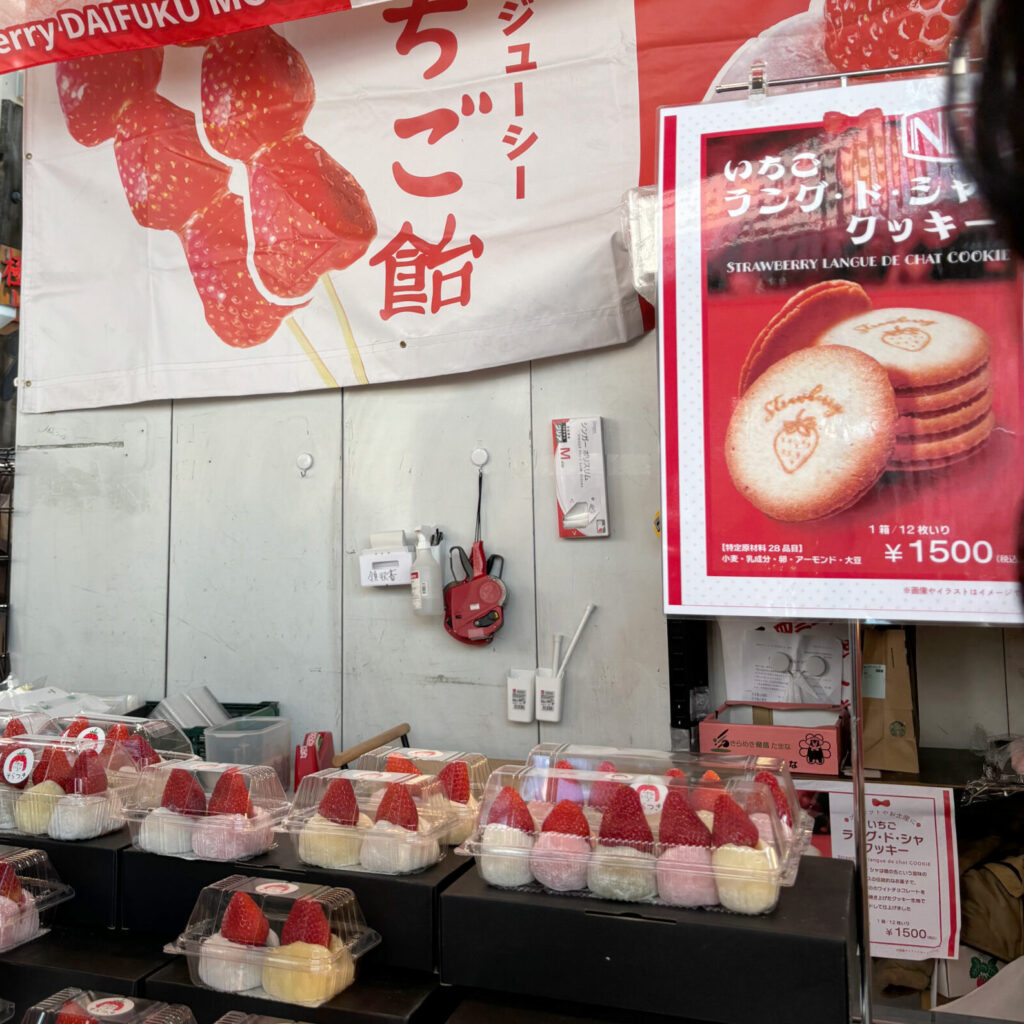

Detour Point ❽ Tarako (Cod Roe) Pasta at Tadokoro Shokuhin, Tsukiji Outer
For the grand finale, head to the diner with a counter! It’s run by a seafood wholesaler specializing in fish roe, so you’ll find delicious dishes featuring tarako, ikura, and more—like rice bowls topped with these delicacies. But if you’re feeling a bit rice-ed out, I highly recommend trying their pasta!
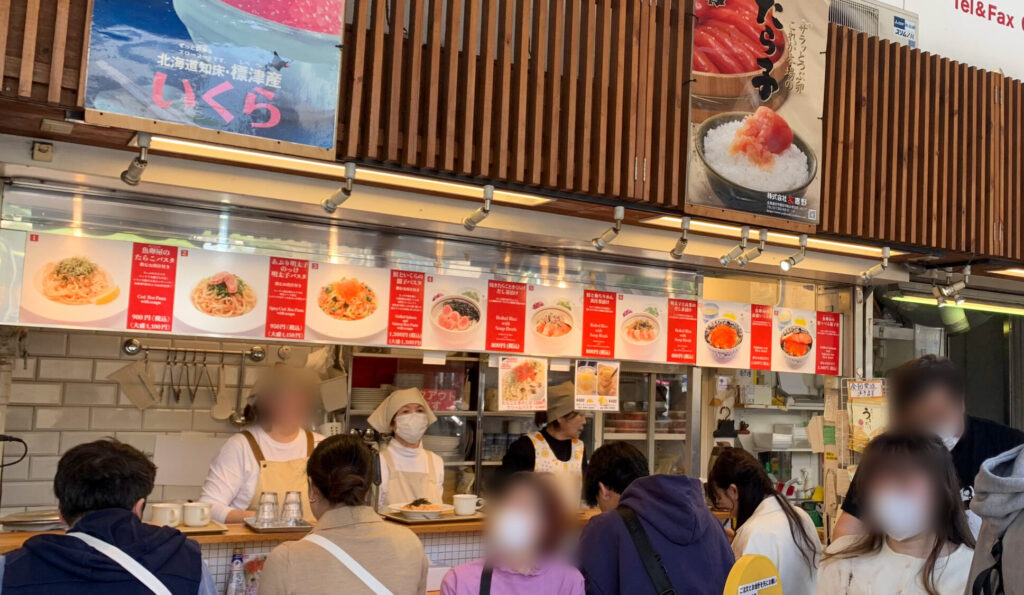
Just like at Tsukiji Outer Market, there’s always a line here too—but the wait isn’t usually too long. If you don’t feel like sitting at the counter, grabbing a spot at the standing tables out front might be the easiest way to enjoy your meal!
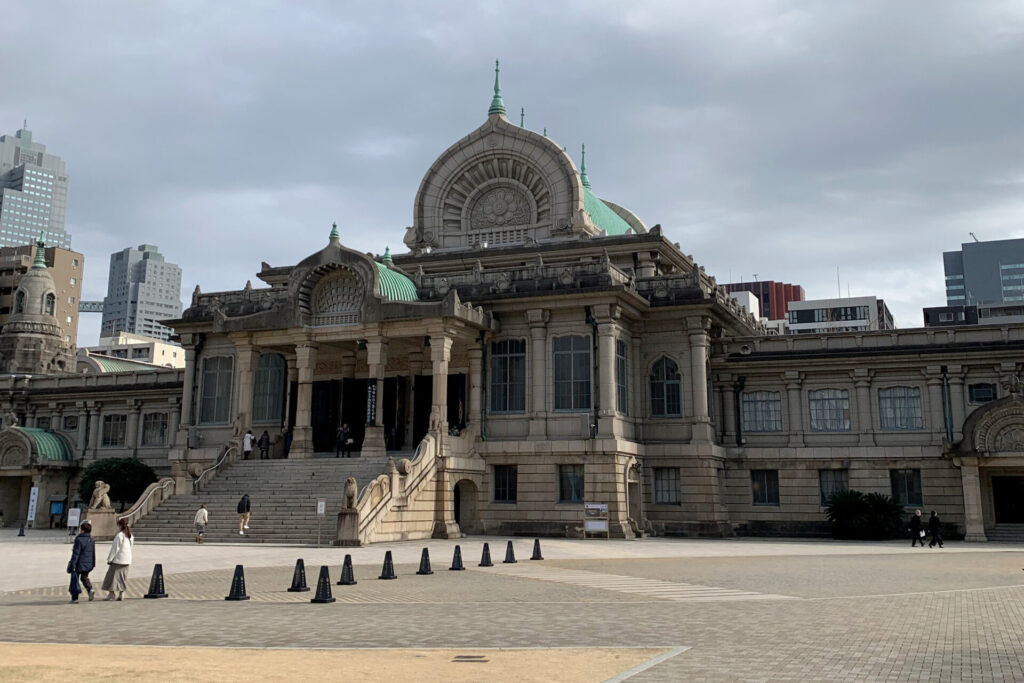
Detour Point ❾ Tsukiji Honganji Temple
Once you’ve satisfied your appetite at Tsukiji Outer Market, don’t you take a leisurely stroll? Just north of the outer market, across the main street, you’ll find Tsukiji Honganji Temple.
Visiting this temple after experiencing traditional Buddhist temples elsewhere in Japan might reveal its unique characteristics. With its exterior inspired by ancient Buddhist architecture from India and other parts of Asia, stained glass at the entrance of the main hall, and numerous animal sculptures. They present a truly distinctive Oriental ambiance, reflecting the origins of Buddhism.
If you take a stroll around the perimeter and explore inside the main hall, you’ll likely deepen your understanding of the origins of Buddhism a little.
On your way back, the nearest station is Higashi-Ginza Station (marked as A on the map). Since we’ll be returning to Ginza again, you might feel like taking a stroll around the area or walking around the Imperial Palace vicinity from Tokyo Station. It wouldn’t be a bad idea. If the weather is nice, it should make for a pleasant walk.
